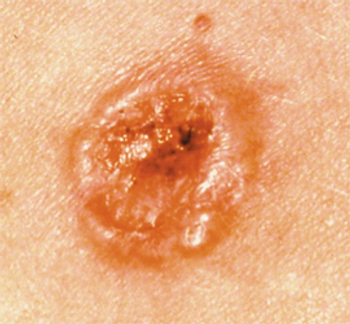
Zongertinib Maintains Efficacy Benefit in First-line HER2-Mutated NSCLC
Results from the Beamion LUNG-1 study showed that first-line zongertinib yielded continued benefit for patients with HER2-mutated NSCLC.
Patients with treatment-naïve advanced HER2-mutated non–small cell lung cancer (NSCLC) who were treated with first-line zongertinib (Hernexeos) experienced a significant and clinically meaningful benefit, according to results from the phase 1 Beamion LUNG-1 trial (NCT04886804) presented at the
The objective response rate (ORR) was 77% (95% CI, 66%-85%; P <.0001), with a complete response rate of 8% and a partial response rate of 69%. The disease control rate was 96% (95% CI, 89%-99%), with a stable disease rate of 19% and a progressive disease rate of 1%.
The median time to objective response was 1.4 months (range, 1.1-6.9), and at the time of data cutoff, 47% of patients remained on treatment.
The median follow-up for duration of response (DOR) was 9.7 months (95% CI, 7.1-9.9), and the 6-month DOR rate was 80% (95% CI, 65%-89%). The median follow-up for progression-free survival (PFS) was 11.6 months (95% CI, 9.7-12.4), and the 6-month PFS rate was 79% (95% CI, 68%-87%).
“Zongertinib given as a first-line therapy demonstrated significant and clinically meaningful benefit in treatment-naïve patients with advanced HER2-mutant NSCLC,” Sanjay Popat, BSc, MBBS, FRCP, PhD, consultant medical oncologist, head of the Lung Unit, and lead for the Lung Cancer Research Programme at The Royal Marsden NHS Foundation Trust, stated during the presentation. “Clinical benefit was observed with zongertinib in all patients, irrespective of HER2 mutation type.”
A total of 74 patients were given 120 mg of zongertinib. Of note, 2 patients had received prior treatment. The presentation focused on cohort 2, which enrolled patients who were treatment-naïve and had a tyrosine kinase domain (TKD) mutation. The primary end point was ORR by blinded independent central review (BICR), and secondary end points included disease control, DOR, and PFS by BICR.
Patients were included if they were 18 years or older with advanced/metastatic non-squamous HER2-mutated NSCLC with 1 or more measurable non-central nervous system lesions, and an ECOG performance status of 0/1. Additionally, patients who had stable/asymptomatic brain metastases were eligible for treatment.
The median patient age was 67 years, 40% of patients were between 65 and 74 years old, and 18% were 75 years or older. Additionally, 46% of patients were Asian compared with 45% who were not, 64% of patients had never used tobacco, 30% had brain metastases, and 66% had A775_G776insYVMA.
Regarding safety, 91% of patients reported treatment-related adverse effects (TRAEs), with 18% reporting a grade 3 TRAE. No grade 4 or 5 TRAEs were reported. A total of 15% of patients had AEs leading to dose reductions, and 9% had AEs leading to discontinuation. There were 2 cases of interstitial lung disease/pneumonitis, both of which were grade 2.
The most common TRAEs included diarrhea (54%), rash (23%), alanine aminotransferase increased (18%), aspartate aminotransferase increased (16%), dysgeusia (16%), and nausea (16%). Popat noted that the safety profile remained consistent with previously reported data. Additionally, there was a low incidence of grade 3 or higher AEs.
In August 2025, the
References
- Popat S, Yamamoto N, Girard N, et al. Zongertinib as first-line treatment in patients with advanced HER2-mutant NSCLC: Beamion LUNG-1. Presented at the European Society for Medical Oncology Congress 2025; October 17-21, 2025; Berlin, Germany. Abstract LBA74.
- FDA grants accelerated approval to zongertinib for non-squamous NSCLC with HER2 TKD activating mutations. News release. FDA. August 8, 2025. Accessed October 17, 2025. https://tinyurl.com/bdh2d4uc
Newsletter
Stay up to date on recent advances in the multidisciplinary approach to cancer.


















































































